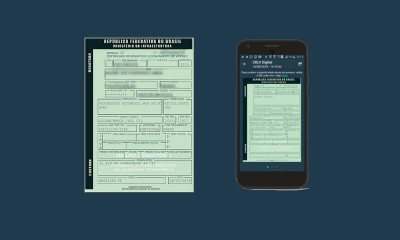The Future of Electric Motorcycles: Exciting Innovations and Developments
Electric motorcycles have been around for a while now, but recent innovations and developments have made them more appealing than ever before. With the increasing emphasis on sustainable transportation and the need to reduce carbon emissions, electric motorcycles have become a viable option for those looking for an eco-friendly mode of transportation.

In the past, electric motorcycles were often criticized for their limited range and lack of power. However, recent developments in battery technology have addressed these issues, making electric motorcycles more practical and efficient. With the introduction of high-capacity batteries, electric motorcycles can now travel longer distances on a single charge, and some models can even rival the performance of their gas-powered counterparts.
As technology continues to advance, the future of electric motorcycles looks bright. With the increasing demand for sustainable transportation, it is likely that we will see even more innovations and developments in the coming years. From improved battery technology to more efficient motors, the future of electric motorcycles is promising.
Evolution of Electric Motorcycles
From Past to Present
The history of electric motorcycles dates back to the late 19th century when electric bicycles were first introduced. However, it was not until the early 2000s that electric motorcycles began to gain traction in the motorcycle industry. In 2006, Zero Motorcycles introduced their first electric motorcycle, the Zero X. This was followed by the launch of the first mass-produced electric motorcycle, the Vectrix, in 2007.
Since then, electric motorcycles have come a long way. In 2021, Harley-Davidson introduced their first electric motorcycle, the LiveWire, which received positive reviews from critics and consumers alike. Other major motorcycle manufacturers such as Yamaha, BMW, and KTM have also released electric motorcycles in recent years.
Future Projections
The future of electric motorcycles looks promising. With advancements in battery technology, electric motorcycles are becoming more powerful and have longer ranges. In 2023, Harley-Davidson plans to release an electric adventure touring motorcycle, the Pan America, which is expected to have a range of over 200 miles on a single charge.
By 2040, it is projected that electric motorcycles will make up a significant portion of the motorcycle market. With the increasing demand for eco-friendly vehicles, electric motorcycles will continue to grow in popularity.
Overall, the evolution of electric motorcycles has come a long way since their inception in the late 19th century. With the introduction of new technologies and advancements in battery technology, electric motorcycles are becoming more powerful and practical for everyday use. The future looks bright for the electric motorcycle industry.
Technological Advancements in Electric Motorcycles
Electric motorcycles have come a long way since their inception, with technological advancements paving the way for better performance, speed, and acceleration. In this section, we’ll explore some of the recent innovations and developments in battery technology, charging solutions, and motor and powertrain developments.
Battery Innovations
The battery is the heart of any electric vehicle, and recent advancements in battery technology have significantly improved the energy density of lithium-ion batteries. This means that electric motorcycles can now go further on a single charge than ever before. Additionally, the development of solid-state batteries could further improve energy density and reduce the weight of batteries, making electric motorcycles even more efficient.
Charging Solutions
Charging infrastructure is an essential aspect of the electric vehicle ecosystem, and recent developments in charging solutions have made it easier than ever to charge electric motorcycles. Fast-charging stations are becoming more prevalent, and wireless charging technology is also being developed. These innovations make it possible to charge electric motorcycles quickly and conveniently, making them a more practical option for everyday use.
Motor and Powertrain Developments
Electric motorcycles are known for their instant torque and smooth acceleration, and recent developments in motor and powertrain technology have further improved their performance. High-performance electric motors are becoming more common, and some manufacturers are developing electric motorcycles with multiple motors for even greater power. Additionally, the development of regenerative braking technology allows electric motorcycles to recover energy during braking, further improving their efficiency.
In conclusion, technological advancements in battery technology, charging solutions, and motor and powertrain developments have significantly improved the performance and practicality of electric motorcycles. As these innovations continue to evolve, we can expect electric motorcycles to become even more efficient, powerful, and accessible, making them a compelling alternative to traditional gasoline-powered motorcycles.
Market Trends and Consumer Demand
Sales and Market Growth
The global electric motorcycle market is expected to grow significantly in the coming years. According to a recent report by ResearchAndMarkets.com, the market is expected to grow at a CAGR of 42.4% from 2021 to 2028. This growth is attributed to the increasing demand for eco-friendly vehicles and the rising fuel prices.
In 2020, the global electric motorcycle market was valued at $2.8 billion. The market is expected to reach $13.0 billion by 2028. The Asia Pacific region is expected to dominate the market due to the high demand for electric motorcycles in countries like China and India.
Regional Market Insights
Europe is also expected to witness significant growth in the electric motorcycle market. The European Union has set a target of reducing carbon emissions by 55% by 2030. This has led to the implementation of strict emission norms, which is driving the demand for electric motorcycles in the region.
In Japan, the government has been promoting the use of electric vehicles to reduce greenhouse gas emissions. This has led to an increase in the demand for electric motorcycles in the country.
Consumer Preferences
Consumers are increasingly opting for electric motorcycles over traditional gasoline-powered motorcycles. This is mainly due to the environmental benefits and lower operating costs of electric motorcycles. In addition, electric motorcycles are also quieter and require less maintenance compared to traditional motorcycles.
Scooters are also gaining popularity in the electric motorcycle market. These vehicles are ideal for short-distance commuting and are more affordable compared to electric motorcycles.
Overall, the electric motorcycle market is expected to witness significant growth in the coming years, driven by the increasing demand for eco-friendly vehicles and the implementation of strict emission norms.
Challenges and Opportunities
Safety and Regulations
As with any new technology, safety concerns are always present. Electric motorcycles are no exception. The lack of engine noise can make them less noticeable to other drivers, increasing the risk of accidents. To address this, manufacturers are developing new safety features such as warning sounds and LED lighting to improve visibility.
Regulations surrounding electric motorcycles are also evolving. Some countries are offering incentives to encourage the adoption of electric vehicles, while others are imposing restrictions on their use. It is important for manufacturers to stay up-to-date with these regulations to ensure their products comply with local laws and regulations.
Environmental Impact
Electric motorcycles are seen as a more eco-friendly mode of transportation compared to traditional gasoline-powered motorcycles. They produce zero emissions and have a smaller carbon footprint. However, the production of batteries and the disposal of old batteries can have negative environmental impacts.
Manufacturers are exploring ways to reduce the environmental impact of batteries by using more sustainable materials and developing recycling programs. Governments are also offering incentives for the development of more environmentally-friendly technologies.
Overall, the challenges and opportunities for electric motorcycles are vast. While safety and regulations are important considerations, the environmental benefits and potential cost savings make them an attractive option for consumers. As technology continues to evolve, it is likely that electric motorcycles will become an increasingly common sight on our roads.
Frequently Asked Questions
What recent technological advancements have been made in electric motorcycle design?
Recent technological advancements in electric motorcycle design include improvements in battery technology, motor efficiency, and charging infrastructure. Lithium-ion batteries have become more efficient and affordable, allowing for longer ranges and faster charging times. Motor efficiency has also improved, resulting in better performance and longer battery life. Additionally, there has been a push to expand charging infrastructure, making it easier for electric motorcycle riders to find charging stations.
Which new electric motorcycle models are expected to hit the market soon?
Several new electric motorcycle models are expected to hit the market soon, including the Harley-Davidson LiveWire, the Zero SR/S, and the Energica Eva Ribelle. These models offer impressive performance and range, making them attractive options for both commuting and recreational riding.
What are the best electric motorcycles for daily commuting?
The best electric motorcycles for daily commuting depend on a rider’s individual needs and preferences. Some popular options include the Zero SR/F, the BMW C Evolution, and the Energica Ego. These models offer excellent range and performance, making them ideal for daily commuting.
How do I choose the right electric motorcycle to purchase?
When choosing an electric motorcycle to purchase, it’s important to consider factors such as range, performance, charging time, and price. Riders should also consider their individual needs and preferences, such as whether they plan to use the motorcycle for commuting or recreational riding. Test rides and research can also help riders make an informed decision.
Are there any new developments from Buell in the electric motorcycle segment?
Buell, a popular motorcycle manufacturer, has recently announced plans to release an electric motorcycle called the Fuell Flow. The Fuell Flow is expected to offer impressive range and performance, making it a highly anticipated release in the electric motorcycle segment.
Is Harley Davidson planning to release any new electric motorcycle models?
Harley Davidson has already released its first electric motorcycle, the LiveWire, and has plans to release additional electric motorcycle models in the future. These models are expected to offer impressive performance and range, making them attractive options for riders looking for an electric motorcycle with a classic Harley-Davidson look and feel.
-

 Trânsito2 years ago
Trânsito2 years agoMudança ou Adição de Categoria da CNH: Como Fazer e Quais os Requisitos
-

 Trânsito2 years ago
Trânsito2 years agoCadastro de Instrutor de Trânsito: Como Fazer a Inscrição ou Renovação
-

 Trânsito2 years ago
Trânsito2 years agoCNH Digital: Como Funciona e Quais os Benefícios para os Motoristas
-

 Trânsito2 years ago
Trânsito2 years agoCertidão de Prontuário: Tudo sobre a Documentação do Condutor
-

 Trânsito2 years ago
Trânsito2 years agoAlteração de Dados Cadastrais: Como Atualizar as Informações do Veículo ou do Condutor
-

 Trânsito2 years ago
Trânsito2 years agoTransferência de Veículo: Como Fazer o Registro em Outro Estado ou Município
-

 Trânsito2 years ago
Trânsito2 years agoPerda ou Roubo da CNH: Como Solicitar a 2ª Via pelo Site do DETRAN
-

 Trânsito2 years ago
Trânsito2 years agoCRLV Eletrônico: A Nova Era da Documentação Veicular
